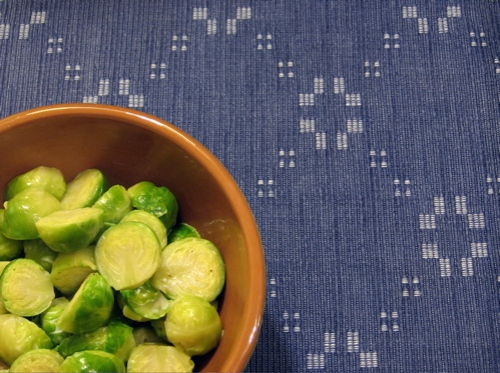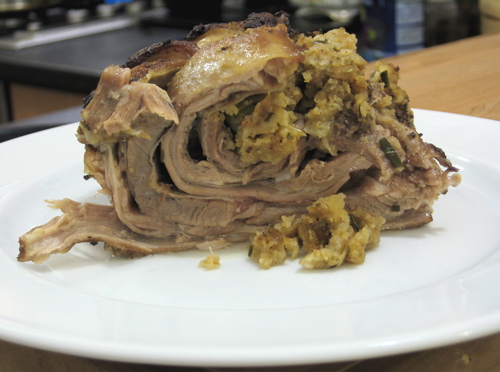Setting a healthy leafy green vegetable swimming in cholesterol is a mainstay of American Thanksgiving, which they must be having soon back there. I lived in the States for five Thanksgivings, and it’s a big, big deal for them: people fly all over fly-over for it. By contrast, Canadian Thanksgiving is a tepid excuse for a long-weekend, perhaps because five months of deep snow is a heavy thought that does not permit as much celebration. Here in the climatically-temperate UK there is no thanksgiving holiday, which I find begrudgingly charming, begrudgingly. But we eat stalks and stalks of brussels sprouts the two months both sides of Christmas, that’s the season. So, for Maninas’s Eating with the Seasons (December), my creamy-nutmeggy brussels sprouts:
Set a large pot of salted water to boil. Lop your sprouts off at the ankles and peel away their dirty little jackets. Now slice each in two, vertically and with little compassion. At the roll of the boil, dump them in and set your kitchen timer to six minutes. Do not let them boil a seventh minute, for the sprouts’ own acids would use that extra minute to strip the last atoms of magnesium out of the remaining chlorophyll-a, the macro-effect being to turn your bright green spouts a sad greeny-grey. So when the beep sounds drain the sprouts like a madman, stir in a bit of cream, grate a little nutmeg over them and toss in a pinch of sea salt. Bring to table, admonishing one and all to eat their brussels sprouts.
What am I thankful for this year? Um, a deceleration in food-price inflation. It’s the silver lining of an economy going down the toilet with a foul smell, not unlike the smell of overcooked brassica. Six minutes, people, six minutes.



















